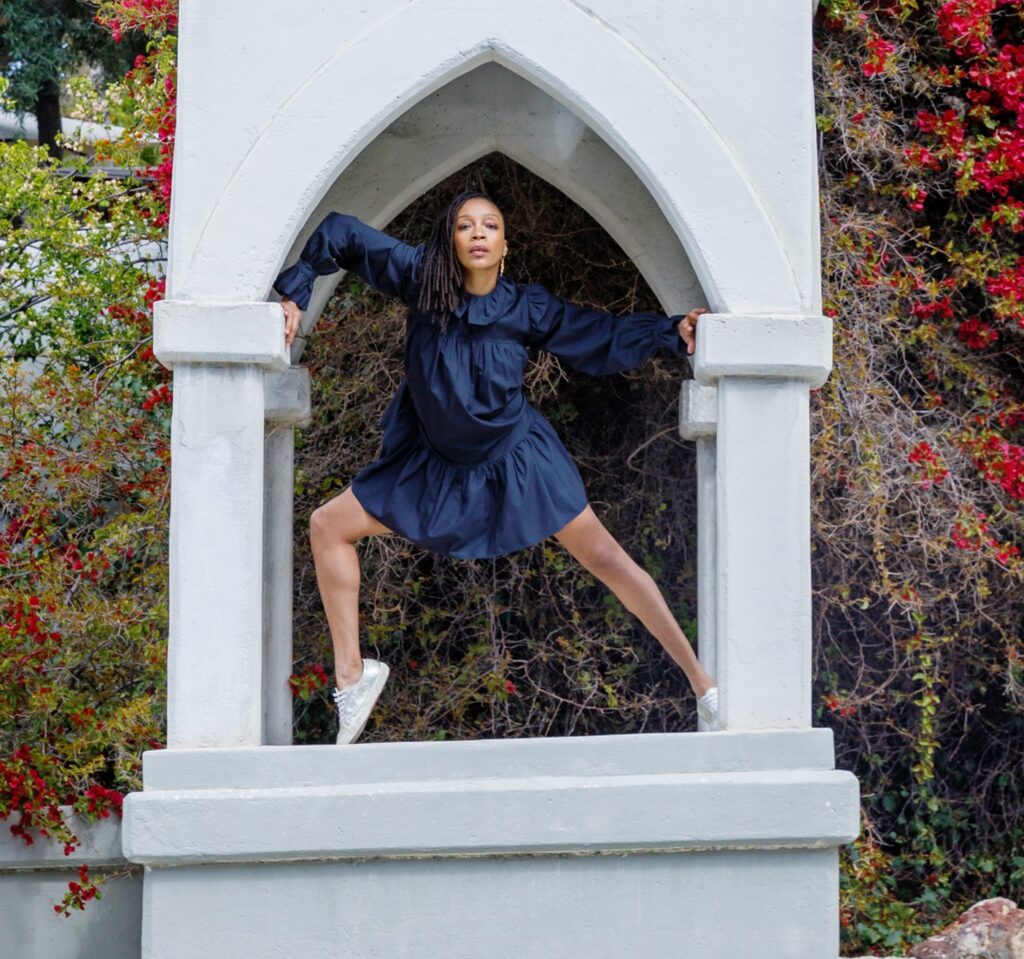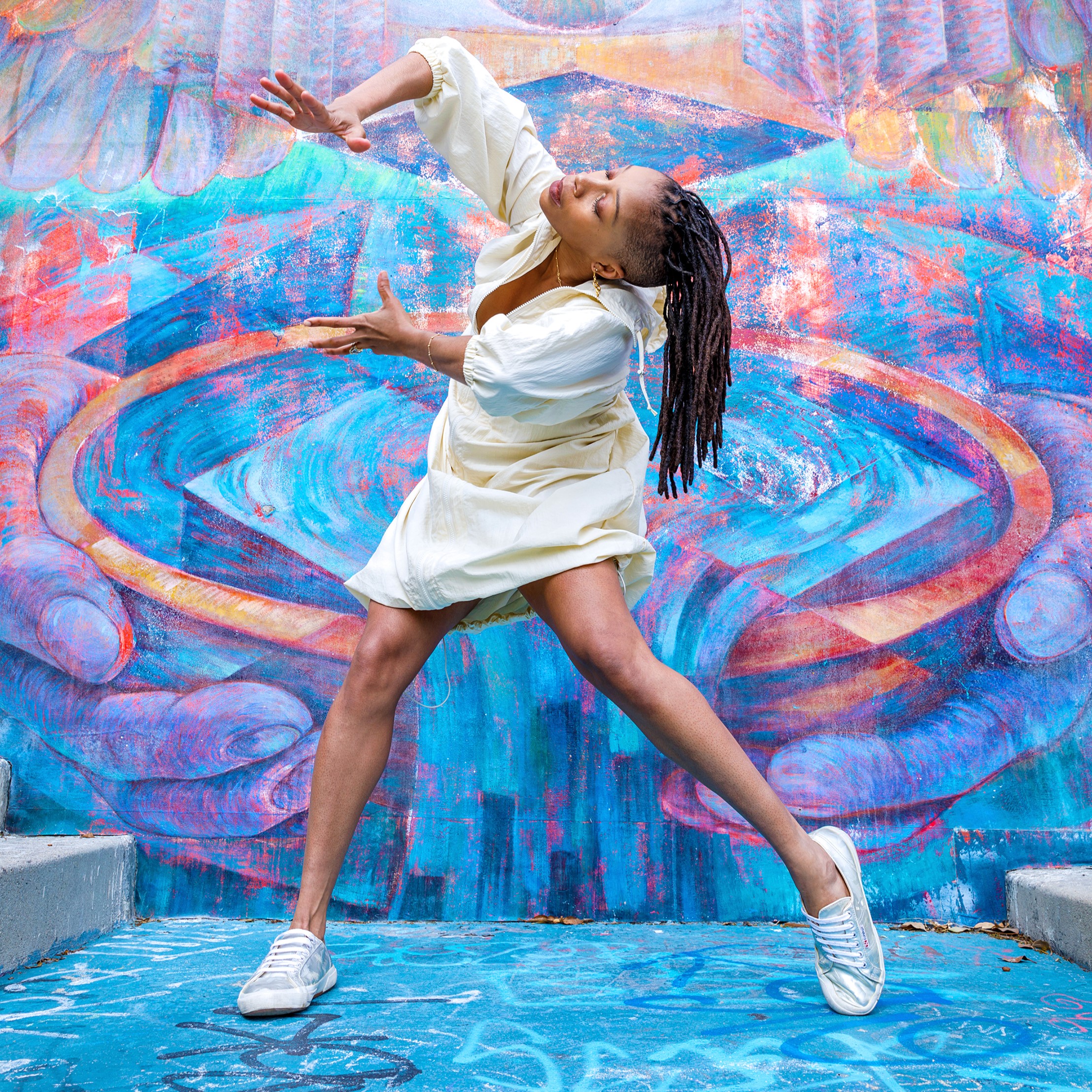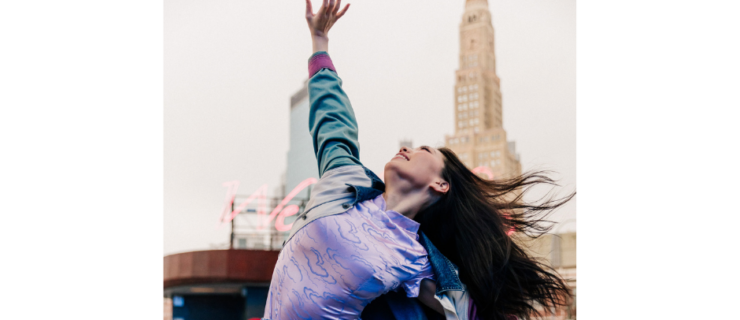Yusha-Marie Sorzano’s Identity as an Immigrant and Black Woman Informs Her Work as a Performer, Teacher, and Choreographer
Even before she realized it, Yusha-Marie Sorzano’s identity as an immigrant was the driving force behind her all-encompassing career—one that has ranged from company positions with Alvin Ailey American Dance Theater and Camille A. Brown & Dancers to guest artist spots and commercial work to choreographing, teaching and becoming the co-artistic director of Zeitgeist Dance Theatre.
“I was really fortunate that when I immigrated to the States, my parents picked a neighborhood that had exposure to magnet-school systems,” says Sorzano, whose formal dance training began at age 8, when her family moved from the Republic of Trinidad and Tobago to Miami. “My parents didn’t know anything about the arts in terms of it being a profession, but they always supported me.” Sorzano embraced every style that came her way, including ballet, jazz and modern. “Finding that common language of being able to speak fluently through movement probably comes from the code-switching that I had to do as an immigrant,” she says.
As Sorzano gained more professional experience, her identity as an immigrant and as a Black woman continued to inform her work as a performer and, eventually, as a teacher and choreographer. “I had worked with more male choreographers as a performer, and it didn’t always occur to me that I also had a voice,” Sorzano says of her start as a dancemaker. “Doing BLACK GIRL: Linguistic Play with Camille A. Brown and having this brilliant Black woman be brave and say, ‘I want to tell our stories,’ it also gave me additional confidence that we need more equitable representation on that stage. Camille would often say to us, ‘You’re dancing it; I want to see you.’ That unlearning of the step and giving myself space to ask those questions of ‘How would you do this, Yusha? What is your story?’ That’s an ongoing journey for me.”

An Early Start:
“I was still living in Trinidad, and there was a dance competition at my school. I remember being onstage and looking at these two students next to me who started doing the running man. I mimicked them and I won. My dad saw me onstage and said, ‘This is you, this is who you are.’ ”
Making a Move:
“I was going the route of classical ballet until I saw the Ailey company. When I saw them hit the stage, I was like, ‘There I am! That’s where I need to go.’ And it just so happened that when I was applying to college, Ailey/Fordham was in their third year of the BFA program.”
Turning Injury Into Inspiration:
“When I ruptured my Achilles in 2017, it was a huge identity crisis, because who was I if I wasn’t a performer anymore? And it was through that that I started to create. To All Our Ends was my first work that I felt really came out of my cultural experience, my identity.”
Her Advice to Dancers:
“A lot of us feel like we have to keep going, going, going. But that leads to burnout. It’s not natural to be able to generate on that high of a level and expect that your voice is going to be cutting-edge and authentic. I think it’s important to remind dancers—all of us, really—that we need to slow down to make space for ourselves.”
Dancing for the President:
“I was performing with the Ailey company in DC, and Barack Obama had just become president. I remember walking to the backstage area at The Kennedy Center and seeing the metal detectors. After the curtain came down in the Yellow section in Revelations, the door opens, and here comes Barack Obama strolling through; I was just thinking, ‘What is happening right now?’ ”
Guiding the Next Generation:
“Teaching consistently gives me space to create and to guide. I’ve taught everyone from five-year-old’s to now teaching college students. I also teach many techniques, which has helped me to weave together my choreographic language.”
Taking a Break:
“Maybe it’s the upbringing I had—my parents were not artists—but when it comes time to disconnect, I am the opposite of dance. It’s a podcast or films, I try to read, I’m just the person who hangs out at the house.”
Continuing the Work:
“All of these things that we’ve been working on in terms of equity and inclusion, we have to then forge a new language that allows for us to create new words. Of course, there’s a learning curve for all of us, but it should not fall to the people that have been othered to keep reminding people to do this work. This is an ongoing conversation, and we have to be comfortable with being uncomfortable, because it is uncomfortable work to address when something is inequitable, when it’s racist, when it’s sexist. Those things require consistent work, and I hope we can be brave.”




